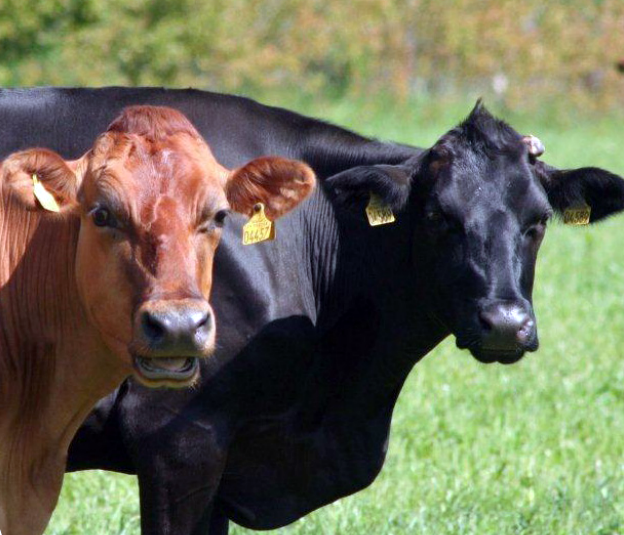Possibilities and requirements for organic dairy breeding lines
The potential of breeding lines that are genetically adapted to organic milk production is essentially unexploited even though specific lines offer the potential to breed for cows with characteristics specific for organic production systems.

Differences between the conventional and organic dairy production are often under discussion. Dairy cows in organic production systems need organic feedstuff and have to be on pasture during parts of the year. Until now, improvements in the efficiency of organic dairy production have mainly occurred through better management, feeding and production strategies, using the same dairy cattle breeds as in conventional production systems.
The main reason, why organic lines of dairy cattle have not been established so far, is most likely that the correlation between the breeding goals for organic and conventional production systems is above 0.8 in Northern Europe. A correlation higher than that has been shown to cause loss of genetic gain when dividing populations with less than a million cows in lines.
However, this was under the assumption that progeny testing of bulls was the overall driver of genetic gain. With the recent implementation of genomic selection, the number of genotyped cows with phenotypes is the overall driver of genetic gain, so even in a small population (< 50,000 cows), genetic gain can be maintained at the same level. Therefore, the critical limit regarding the correlation between breeding goals is likely to be higher now. Mainly two factors affect this correlation. Firstly, the economic values in the breeding goal and secondly the presence of biological genotype-by-environment interactions.
On the condition that the economic values differ between the two production systems and genotype-by-environment interactions exist, it may be beneficial to establish different lines of conventional and organic dairy cattle and thereby further improve the efficiency of organic dairy production through selective breeding.
In the project SOBcows we investigate whether it is possible to develop specific lines suited for organic productions systems. Our expectation is that specific organic breeding material will be beneficial for organic breeders as cows in these productions systems are like to have better health resistance and easier calvings than cows in conventional production systems.
A survey among all - both conventionally and organic – Danish dairy producers, showed that organic dairy producers on average had more or less the same short term wishes as conventional dairy producers, when they were asked about trait preferences for the traits within the breeding goal. One of the reasons may be that the respondent did not know the long term effects of their breeding goal choice. We are therefore in the process of estimating the long term consequences of these answers in relation to long term genetic gain for the traits within the breeding goal.
The survey also showed groups of organic dairy producers, who attach great importance to traits related to health and welfare. Furthermore the answer among many of the organic farmers may have been different if they had known the long term consequences of their choice. We conclude that the answers are more suited for development of a farm index to be used at the a specific farm than for the development of a breeding goal at breed/population level, as the time horizon for development of a breeding goal at population level is much longer than for a farm index.
Furthermore there is a possibility that it’s not the same genes affecting the “same” trait in different production systems – G by E interaction. The importance of this phenomenon is currently under investigation in the project G by E interactions between organic and conventional production systems.
Despite the answer from organic dairy producers, we believe that the division of breeds in organic and conventional breeding lines is relevant. The value of such a division is however dependent on 1) whether the present breeding goal already now fulfill the organic principles, 2) the degree of G by E interactions, 3) the value of being able to focus on unique traits and 4) the value of being able to differentiate organic products on both management system and genetic background.
So the question is whether the cost of dividing the breeds in different lines will pay off by the gains to be achieved. This will be answered in SOBcows within two years.
The project is coordinated by ICROFS and part of The Organic Research, Development and Demonstration Programme Organic RDD 2, supported by GUDP under The Danish Ministry of Environment and Food.